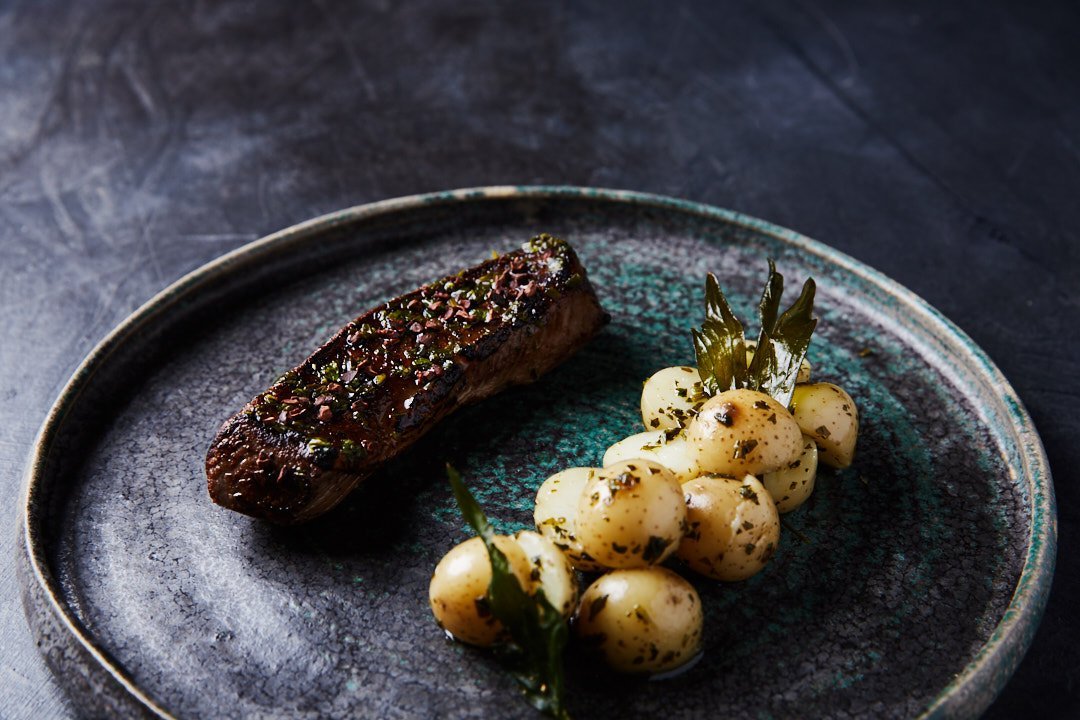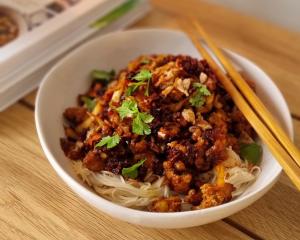
It took a mandarin and coconut parfait made in the shape of Australia for chef Peter Gunn to get ‘‘blowback’’ for being a New Zealander cooking Australian food.
Gunn is known for his modern Australian cuisine and has two ‘‘hats’’ to his name for his work.
Having lived in Australia for 13 years, owning a Melbourne restaurant and bar, marrying an Australian woman and having two Australian children, he feels comfortable in what he does.
‘‘I’m three-quarters of the way here.’’
So he found it quite surprising when he received criticism for the lockdown-inspired dessert.
‘‘Visually, when it actually does look like Australian food or Australia, that is the only time I got blowback.’’
However, he does admit that is not necessarily where he saw himself when he first jumped on a plane to Melbourne with a mate back in 2009.
‘‘There were no plans to stay in Melbourne, which is why I spent only a year at my first two jobs as I planned to move on. Then I met my wife and it all came together.’’
His first job was at fine-dining institution Ezard with chef Teage Ezard, who used a lot of east Asian flavours in his food.
‘‘I’ve just maintained that side of my cooking. I don’t label it as fusion at all, just the inspiration of those flavours, looking to balance sweet, savoury and salty, ensuring things have texture.’’
A year later, Gunn was on the move to country Victoria where he worked with top chef Dan Hunter at the Royal Mail. He then found a home as sous chef in fellow-New Zealand chef Ben Shewry’s award-winning three-hatted Attica, which had a regular spot on the World’s 50 Best Restaurants list.
Gunn was there for five years, learning all he could from Shewry, who is known for his inventive menus showcasing native Australian ingredients. It was while working there he was named the Pacific winner of San Pellegrino’s Best Young Chef competition in 2015.
Keen to try his hand at his own style of cooking, Gunn experimented with restaurant pop-ups before finding his Collingwood site and opening IDES, which achieved two hats in 2016.
Gunn’s concept was to use locally grown produce to create modern Australian food with influences from Melbourne’s multicultural society in a degustation-type menu.
It means all his fresh, raw ingredients, such as rock and Pacific oysters, southern southern blue fin tuna, wagyu beef and Australia’s iconic barramundi, come from Melbourne and its surrounds first, and then from wider Australia.
‘‘I could list my entire menu, it’s all really good. It’s Australian produce worked in a way that is leaning into the multicultural aspects of our city bringing the food together on the plate as Australian food.’’
He admits to one New Zealand ingredient on his bar menu - scampi. It is served with vanilla butter in a nod to a dish from the former Martin Bosley’s Yacht Club in Wellington, where Gunn worked in his early days.
Gunn, from Porirua, discovered cooking after doing a pre-trades programme through school.
‘‘I leaned into baking first but the place I wanted to work in was in Johnsonville and start-time was 4am. As a 17-year-old, a 4am start was like go jump, right.’’
So he started cooking and baking at home, soon deciding he was going to be a chef.
‘‘You learn you can’t just be a chef, you’ve got to start at the bottom.’’

He got a job washing dishes at Dockside, learning the ins and outs of the kitchen. It was there he saw a career he could grow in.
‘‘You apply yourself and work towards your next opportunity. That’s the way it happened for me.’’
He moved to Wellington’s Hummingbird, then spent a year in Ohoka, near Christchurch, staying with his aunt and working at modern Asian fusion restaurant Indochine.
‘‘I enjoyed the work. It wasn’t a fairy tale, it wasn’t all easy, but I was getting into those teenage years and I needed money, I needed work.’’
Those early experiences shaped how he wanted his own restaurant to work.
‘‘A major thing I try to provide here for me and my team is the environment. We are looking to create a positive environment that involves some nurturing, some growth, some stability — just instil some confidence.’’
Gunn is always looking to improve and learn.
‘‘This morning I spent an hour and half looking at a French brasserie book from 1993, reading it on the train with my daughter playing with her My Little Pony on the seat next to me.
‘‘[I was] looking at beetroot and walnut salads, which are far from what we’ve come to cook at IDES, but reading the story of how people from different walks of life come together to create magic in restaurants.’’
This approach leads him to collaborate with other chefs whenever he can.
‘‘Experiences in other fields are so very, very important to creating a dynamic restaurant experience. You’ve got to keep evolving.’’
Gunn has not had many opportunities to do that since Covid, but now borders have reopened and restaurants are getting back on their feet, he is grabbing the opportunity.
‘‘For the longest time we haven’t been able to travel without problems, so it’s been easier to let go than do it.’’
Collaborations such as those with Ryan Henley, executive chef at QT Queenstown, enable Gunn to stay in touch with what is happening in New Zealand.
‘‘Respect, support, motivation - it’s a learning experience for me and my head chef. To get there and see how they’re doing things and where everything’s at.
‘‘[We’re] working with one of the leaders of the team down there, taking what we can from that and applying it back to help the restaurant back here [in Melbourne].’’

Not that he is getting much of an opportunity to spend time in the resort with the demands of his two businesses and family limiting his stay.
‘‘It’s pretty hard to get away. I’ve got to get back, the kids are at school so that requires a lot. And the restaurant is very busy here.’’
He juggles the demands of work with family but makes sure to work around his children’s schedules.
How does he do it all?
‘‘I don’t know how I do it - I basically don’t stop. When I stop it gets difficult.’’
So he maintains the momentum, although it can be very challenging, especially when three staff members, including his head chef, get struck down with Covid over a weekend. Just when Gunn thought Covid problems were over.
‘‘I had a horrible weekend. Just because I said ‘Hasn’t the weather been beautiful?’. Everyone is out and about, there is plenty going on, so it doesn’t seem like it’s around, and then it happens like that and no, you’re not out of it yet.’’
Like everyone in hospitality, Gunn had to quickly pivot during Covid lockdowns and run with ideas to keep IDES afloat. He started a ‘‘finish at home’’ offering, with dishes prepared at the restaurant then packed down and delivered. They provided step by step instructions on how to cook components and plate up.
‘‘We encouraged [our customers] to have a little bit of fun along the way. [We were] trying to, I guess, create a bit of experience.’’
For the at-home meals they used the branding for his March bar concept, which had been put on hold when Covid hit.
‘‘IDES is a modern-day fine diner, so we were not sure how well it would translate or if people would be interested in replicating IDES meals at home. So we used March branding and it worked out really well. We were able to keep the integrity of what IDES is — an in-house dynamic experience — but at same time deliver to people in their homes.’’
That, and the government wage subsidy, meant he was able to maintain 90% of his staff and last year he opened his March bar.
‘‘At the end of the we day got through it, limped through it, and maintained the end goal of trying to do something new and offer something unique to the city of Melbourne.’’
TO SEE
Peter Gunn with Ryan Henley, QT Queenstown’s Lil Red, March 3.

Peter Gunn’s roast lamb loin and lovage potatoes
2 x 350g lamb loins (backstrap), cap on
Sea salt
Black pepper
10g cocoa nibs
10ml oil
200g small chat potatoes
1L water
50g sea salt
200g clarified butter
80g lovage
50ml oil
10 large lovage leaves
Method
Remove most the fat from the loins leaving 1 small layer. Season with salt and pepper and sear on all sides until golden.
Roast in oven at 180degC for 2 minutes and allow to rest for 10 minutes.
Wash potatoes and halve any large ones, bring to boil in 1 litre of water, add 50g salt and cook until tender.
Make lovage butter by heating clarified butter and chopping the lovage then combining and allowing to sit until cool.
Heat 50ml oil to 150degC and fry leaves until crisp and drain on paper towels.
To serve, heat lovage butter and spoon a tablespoon over lamb loin then sprinkle with cocoa nibs and sea salt.
Toss potatoes in remaining lovage butter and arrange neatly on plate and top with crisp lovage leaves.

Lovage
Tastes like celery with a little parsley flavour and an extra peppery bite.
Grows well in most places in rich moist soil.
A perennial, plants die down each winter, re-emerging in spring.
Plant looks similar to angelica.
Originated in the Mediterranean, where it’s known as the ‘‘Maggi’’ plant for its similarity to the yeast extract.
- Source: Herb Federation of New Zealand











